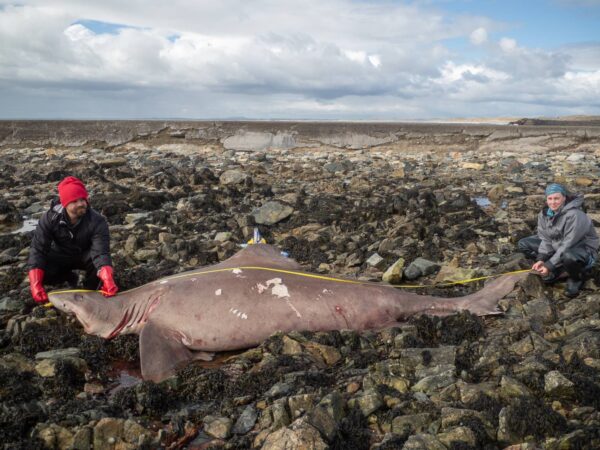A rare shark washed up on the shores of Co Wexford in what scientists believe to be the first official record of the species in Irish waters.
The smalltooth sand tiger (Odontaspis ferox) is rarely seen by humans because it normally lives offshore in waters more than 100 metres deep. At 14 feet long (4.25m), the female shark found in Wexford is at the upper end of the size limits for the species.
Scientists at Trinity College Dublin said they were surprised to see it in Co Wexford, since its habitat in the eastern Atlantic Ocean is thought to only run as far north as the Bay of Biscay.
Shark biologist Nicholas Payne, an assistant professor at Trinity’s School of Natural Sciences, was notified of the stranding by a Swiss tourist who spotted the shark while walking.
A team of researchers from Trinity College and University College Dublin worked against the incoming tide to take biological samples from the shark in a bid to discover why it died.
‘Not aggressive animals’
A fortnight earlier, another of the species washed up on the south English coast and Dr Payne said there were concerns about seeing two in a short space of time in such a northerly location.
Dr Payne said: “Unfortunately, another of this species washed up on the south English coast just two weeks ago; we all thought that was very strange at the time given the northerly location, but to see a second one here so soon after is a little concerning. We will now do a number of tests to try to learn what might have caused this to happen and also to learn more about this species in general.”
They intend to make contact with the marine biologists in the UK to share information about the two sharks. “We’re hopeful it’s not the start of something or that we are going to see more mortalities in this species”, he said.
Smalltooth sand tiger sharks, which pose no risk to people, are currently assessed as “vulnerable” by the International Union for the Conservation of Nature. Dr Payne said these sharks are not aggressive animals and there has not been a single recorded incidence of a human being bitten.
While not specifically targeted by commercial fisheries, they may face threats such as bycatch, or from pollution.
